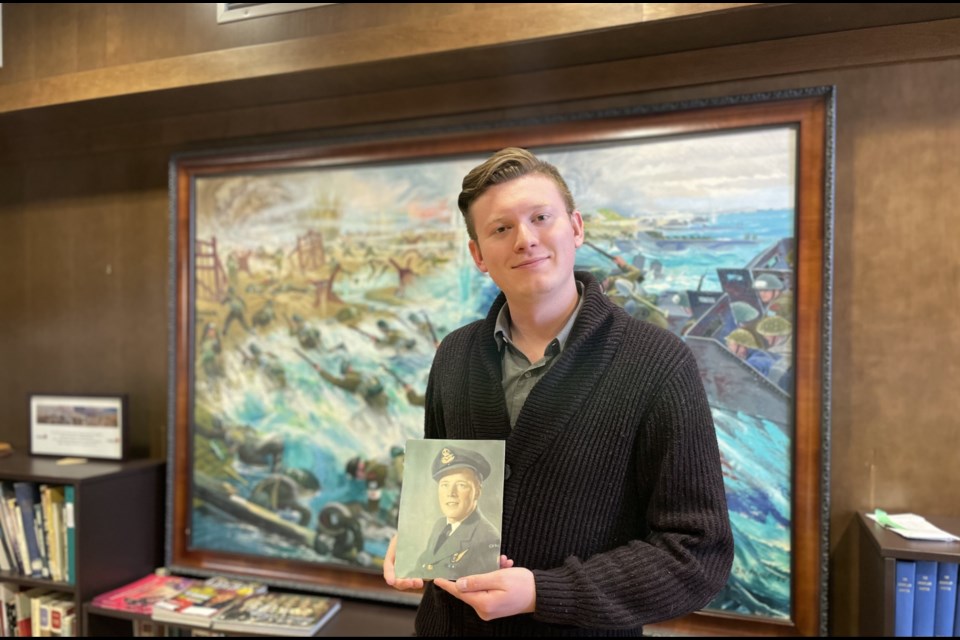KAMSACK, REGINA — A collaborative effort between the University of Regina and the Royal United Services Institute of Regina (RUSI) has brought forth a project aimed at commemorating Canadian involvement in various conflicts throughout history. This initiative encompasses approximately 28 pedestals, each dedicated to battles, ships, and conflicts in which Canadians have participated. These pedestals, adorned with plaques offering concise overviews including casualties, facts, and descriptions, serve as focal points for a deeper exploration into the narratives of war.
The project, spearheaded by various individuals affiliated with the University of Regina and RUSI, seeks to delve into the intricacies of each event, person, or theme depicted on the pedestals. Former Kamsack resident Mason Hausermann, a student of the University of Regina working on the project for an internship said, “My project is to do more thorough research and provide more information on each event/person/thing. The research and collection of pictures, audio, and quotes are then compiled into a website-like presentation that can be accessed by scanning a QR code on the pedestal like an outdoor museum where you can learn more using your phone, turning it into a virtual museum.
The focus of these is meant to tell a more personal story; what was it like for the soldiers? What fears/anxieties did they have? What were the roles they played? How did they survive? Each of these presentations ends with a biography of a Saskatchewan veteran. This is to ensure these veterans’ stories are told in order to both honour them and provide a personal connection to Canada's sacrifices during the many conflicts in our history.”
One such veteran is the late Stan Stone, born in Kamsack in 1916 and a member of the Royal Canadian Air Force (RCAF) from 1943 to 1945. According to the pedestal project website Stone, “trained in the Commonwealth Air Training Plan as an Air Bomber/Aimer, and served in RCAF Bomber Command from 1943 to 1945. In a Handley Page Halifax bomber, he flew numerous missions across the English Channel to German targets beyond the front lines.”
According to Hausermann, Stone's grandson, Neal, a former member of the Royal Canadian Air Cadets, has provided invaluable insights into his grandfather's experiences. A quote from Stan Stone, according to Neal Stone, was, “Without the camaraderie and trust in each other’s skills, we never would have been able to pull off the number of successful runs that we did and return home.”
Mason Hauserman, in an email to the Kamsack Times, went into more detail about Neal Stone’s history, “Neal, who served as in the Royal Canadian Air Cadet 633 Kamsack Squadron from 1985 to 1990, and then the Prairie Regional Gliding School in Yorkton and Gimli as a glider pilot afterwards, was also a recipient of the International Cadet Exchange Program to Germany in the summer of 1990 – the summer after the fall of the Berlin Wall and the reunification of East and West Germany (partitioned after the defeat of the Nazis). Neal remembers two of several Berlin Wall pieces he brought back found homes at the Kamsack Comprehensive Institute and atop his Grandpa Stan’s display cabinet in the dining room. For his grandfather, that piece of the Wall seemed to bring nearly a half-century full circle—living history before his eyes in what was fought so hard for during the War, freedom, realized with a cost of many, many lives and the passage of time.”
As the project stands today, it serves as a testament to the enduring importance of commemorating and understanding Canada's military history. Through innovative approaches such as digital storytelling and personal narratives, it endeavours to ensure that the sacrifices of veterans like Stan Stone are never forgotten.




